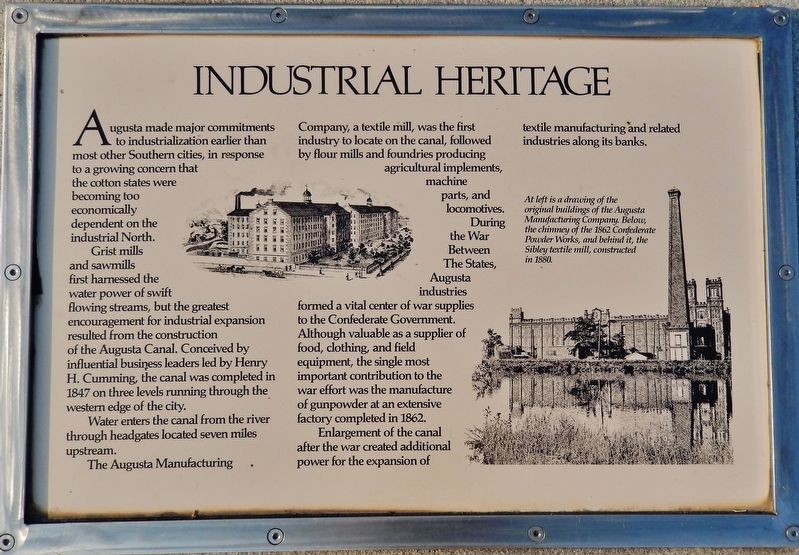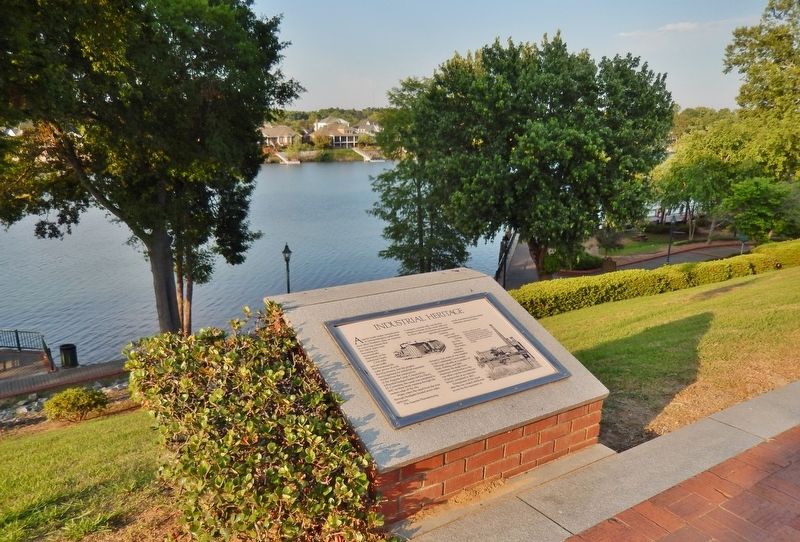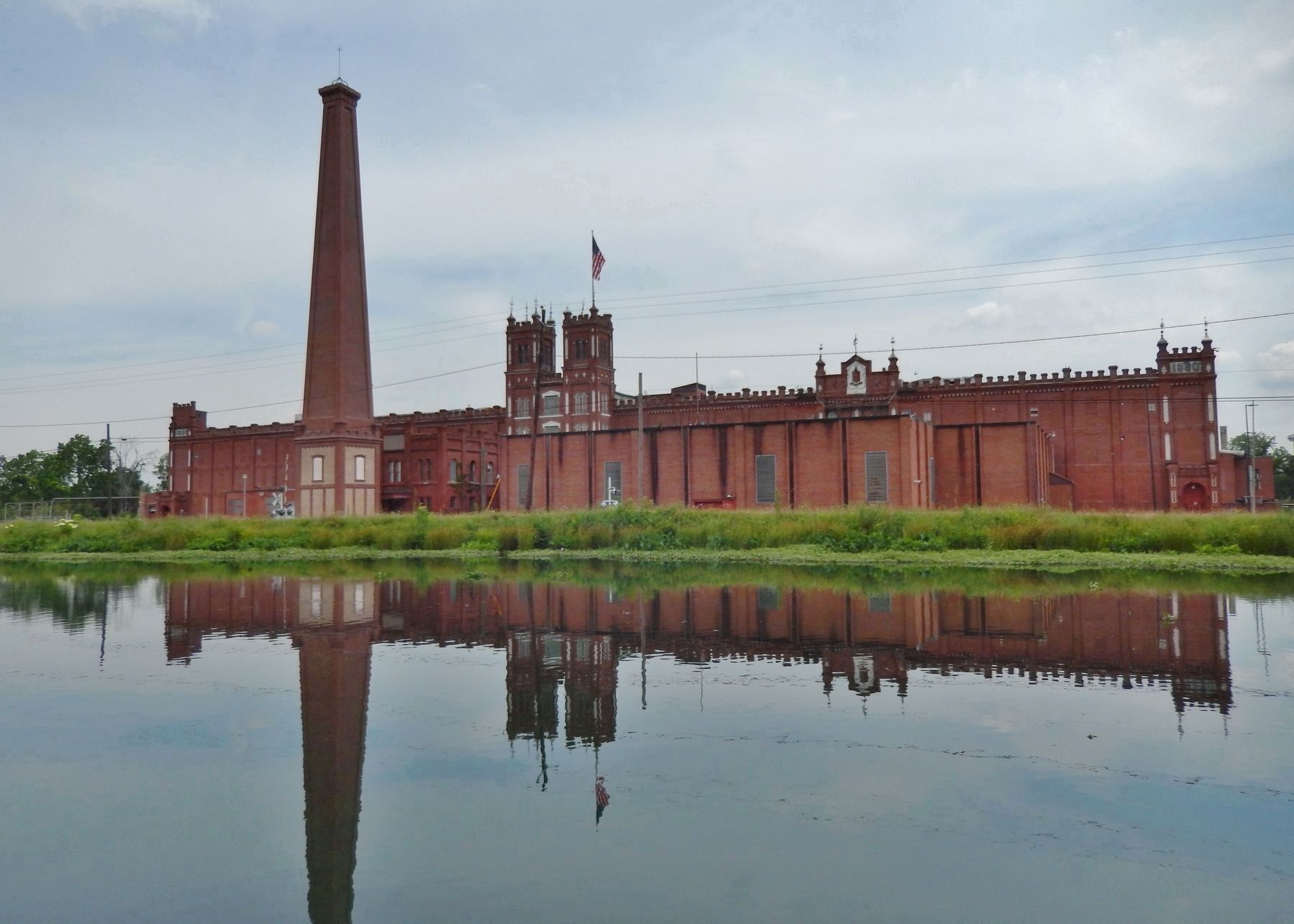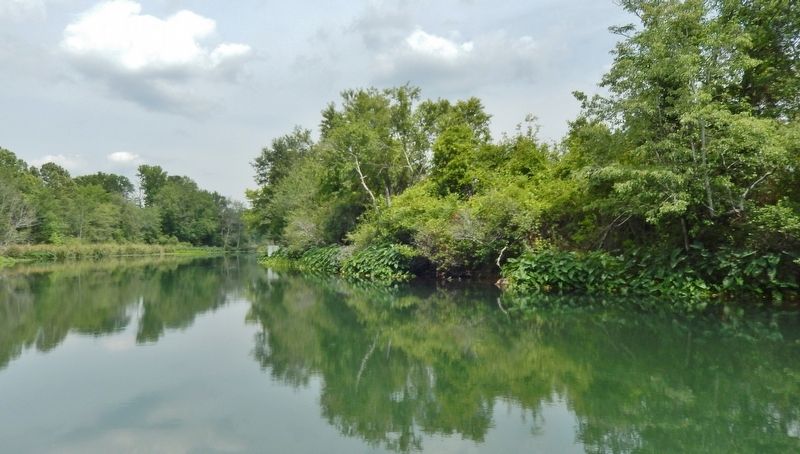Augusta in Richmond County, Georgia — The American South (South Atlantic)
Industrial Heritage
Augusta made major commitments to industrialization earlier than most other Southern cities, in response to a growing concern that the cotton states were becoming too economically dependent on the industrial North.
Grist mills and sawmills first harnessed the water power of swift flowing streams, but the greatest encouragement for industrial expansion resulted from the construction of the Augusta Canal. Conceived by influential business leaders led by Henry H. Cumming, the canal was completed in 1847 on three levels running through the western edge of the city.
Water enters the canal from the river through headgates located seven miles upstream.
The Augusta Manufacturing Company, a textile mill, was the first industry to locate on the canal, followed by flour mills and foundries producing agricultural implements, machine parts, and locomotives.
During the War Between The States, Augusta industries formed a vital center of war supplies to the Confederate Government. Although valuable as a supplier of food, clothing, and field equipment, the single most important contribution to the war effort was the manufacture of gunpowder at an extensive factory completed in 1862.
Enlargement of the canal after the war created additional power for the expansion of textile manufacturing and related industries along its banks.
Topics. This historical marker is listed in these topic lists: Industry & Commerce • War, US Civil • Waterways & Vessels. A significant historical year for this entry is 1847.
Location. 33° 28.702′ N, 81° 57.872′ W. Marker is in Augusta, Georgia, in Richmond County. Marker can be reached from James Brown Boulevard north of Reynolds Street, on the right when traveling north. Marker is located along the Augusta Riverwalk, between James Brown Blvd and 8th St. Touch for map. Marker is at or near this postal address: 15 8th Street, Augusta GA 30901, United States of America. Touch for directions.
Other nearby markers. At least 8 other markers are within walking distance of this marker. Indians (a few steps from this marker); De Soto In Georgia (within shouting distance of this marker); The Great Fire of 1916 (within shouting distance of this marker); Great Indian Warrior / Trading Path (within shouting distance of this marker); Cotton (within shouting distance of this marker); Founding of Augusta (within shouting distance of this marker); Floods (within shouting distance of this marker); William Bartram Trail (about 300 feet away, measured in a direct line). Touch for a list and map of all markers in Augusta.
Related markers. Click here for a list of markers that are related to this marker.
Also see . . .
1. Augusta Canal. Augusta Canal National Heritage Area homepage:
The Augusta Canal,
built in 1845 as a source of power, water and transportation, is the only intact industrial canal in the American South in continuous use. Spearheaded by Augusta native Henry H. Cumming, the Augusta Canal began to fulfill Cumming’s vision in short order. By 1847 the first factories – a saw and grist mill and the Augusta Factory - were built, the first of many that would eventually line the Canal. (Submitted on February 22, 2018, by Cosmos Mariner of Cape Canaveral, Florida.)
2. Confederate Powder Works Chimney - Augusta, Georgia. Explore Southern History website entry:
At the beginning of the Civil War gunpowder supplies for the Confederate armies were insufficient. In 1861 Jefferson Davis, president of the Confederacy, charged Colonel George Washington Rains with solving this issue by creating a local supply of gunpowder. Rains chose the flat lands by the Augusta Canal as the most suitable site for making the much needed gunpowder. He named Major Charles Shaler Smith as architect to design the Confederate Powder Works. (Submitted on February 22, 2018, by Cosmos Mariner of Cape Canaveral, Florida.)
3. Enterprise Mill. Wikipedia entry:
James L. Coleman, an Augusta farmer, had plans to build a flour mill on his plantation as early as 1845. With the initiation of the Augusta Canal project in 1845, he asked that its route be slightly changed in order to supply his land
with water power. It was, and Coleman finished construction of a four-story granite mill in 1848 known as “Coleman’s Flour Mill” or “Coleman’s Granite Mill.” In 1873, the Granite Mill had an addition built on its west end. Upon completion of the canal enlargement in 1875, Augusta businessmen formed the Enterprise Manufacturing Company. (Submitted on February 22, 2018, by Cosmos Mariner of Cape Canaveral, Florida.)
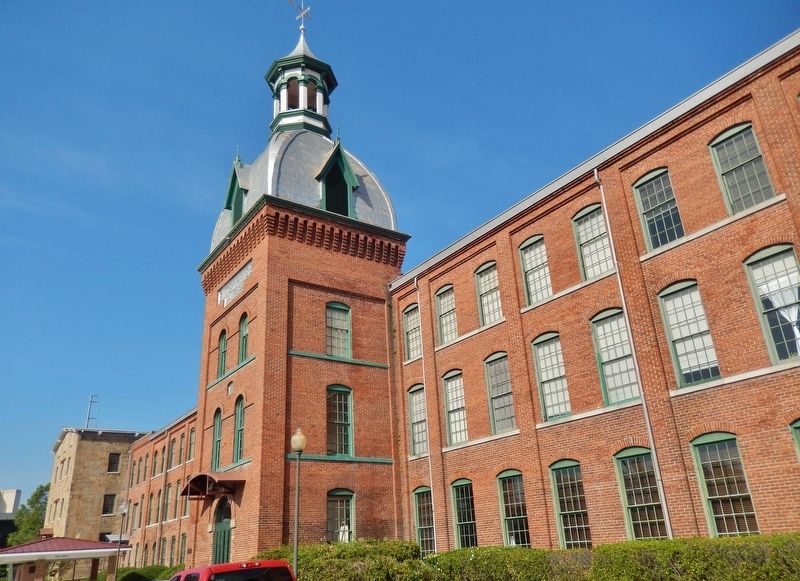
Photographed By Cosmos Mariner, May 11, 2017
4. The Enterprise Mill (1881)
During the late 1800s the Augusta Canal fueled an industrial revolution that changed the city forever.
Factories like the Enterprise Mill led the way. They used canal water channeled from the Savannah River to power their machines. They churned out mile after mile of some of the country's finest cloth and shipped it throughout the United States. Seemingly overnight, the mills transformed Augusta from a struggling town into a major southern manufacturing center that challenged the industrial might of the North.
Credits. This page was last revised on May 6, 2024. It was originally submitted on February 22, 2018, by Cosmos Mariner of Cape Canaveral, Florida. This page has been viewed 754 times since then and 55 times this year. Photos: 1, 2, 3, 4, 5. submitted on February 22, 2018, by Cosmos Mariner of Cape Canaveral, Florida. • Bernard Fisher was the editor who published this page.
